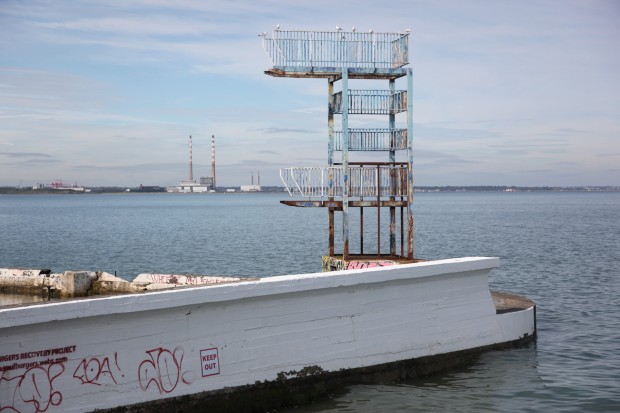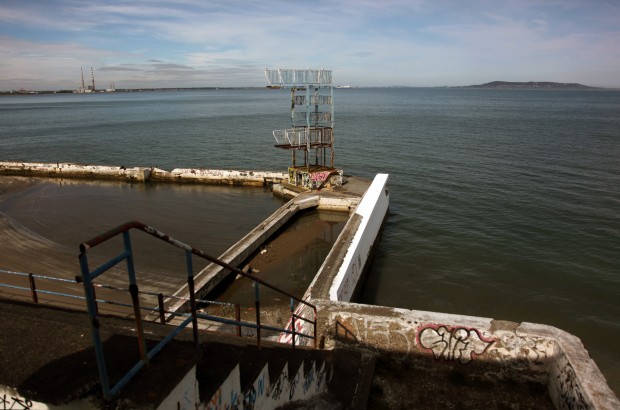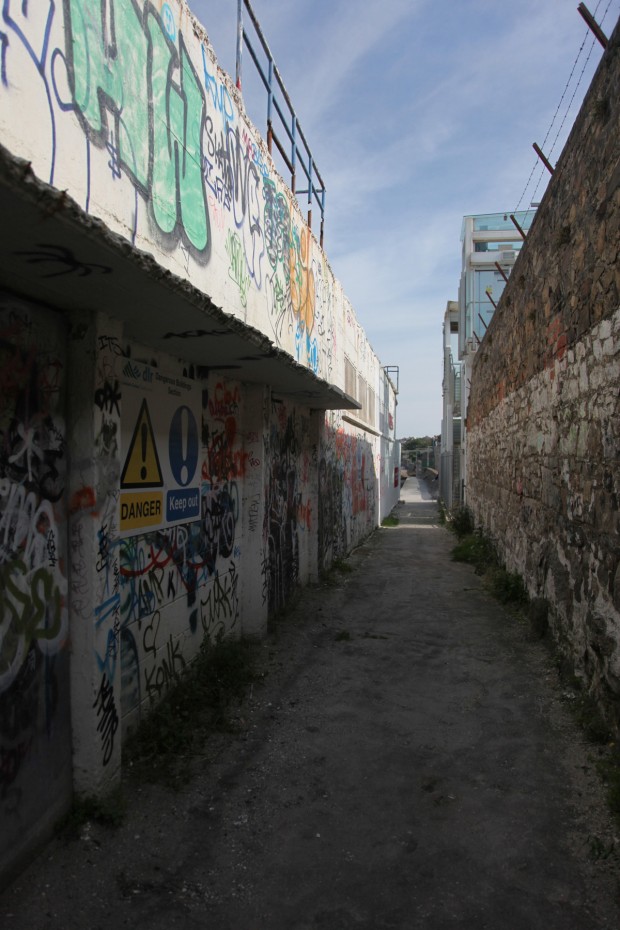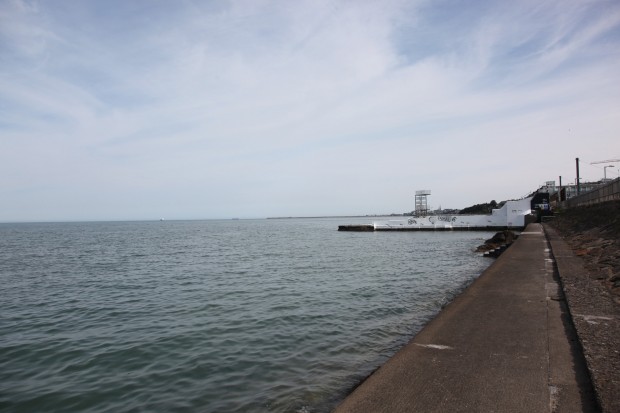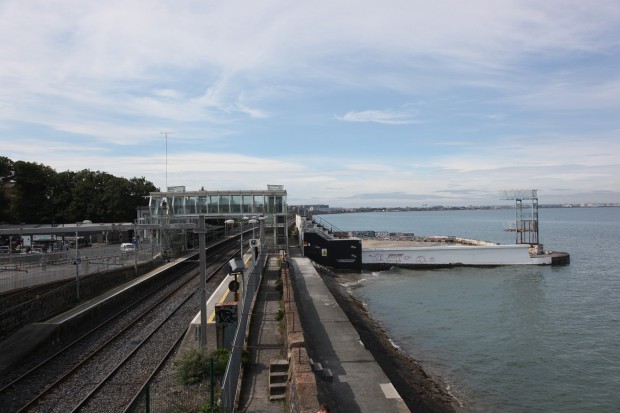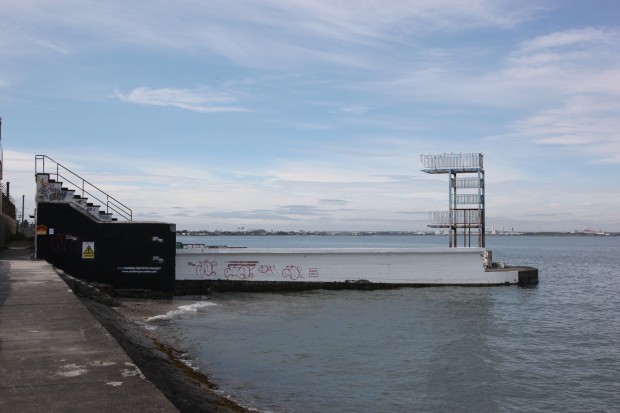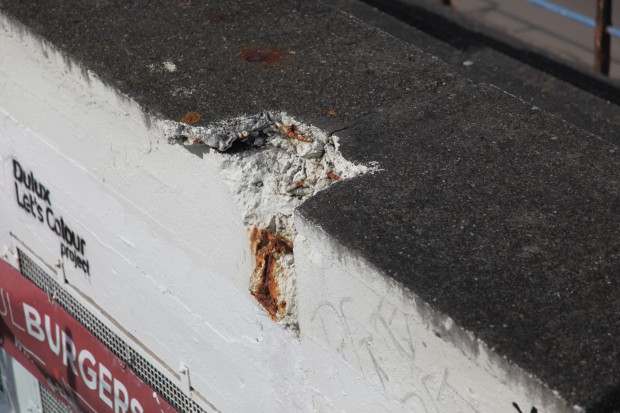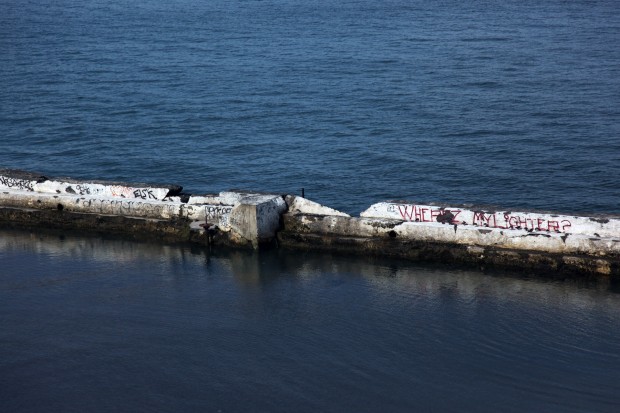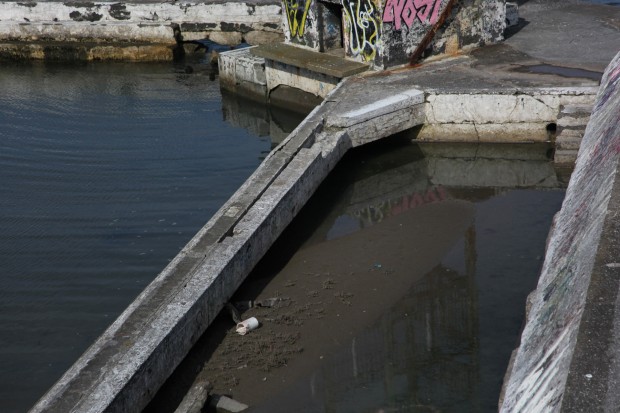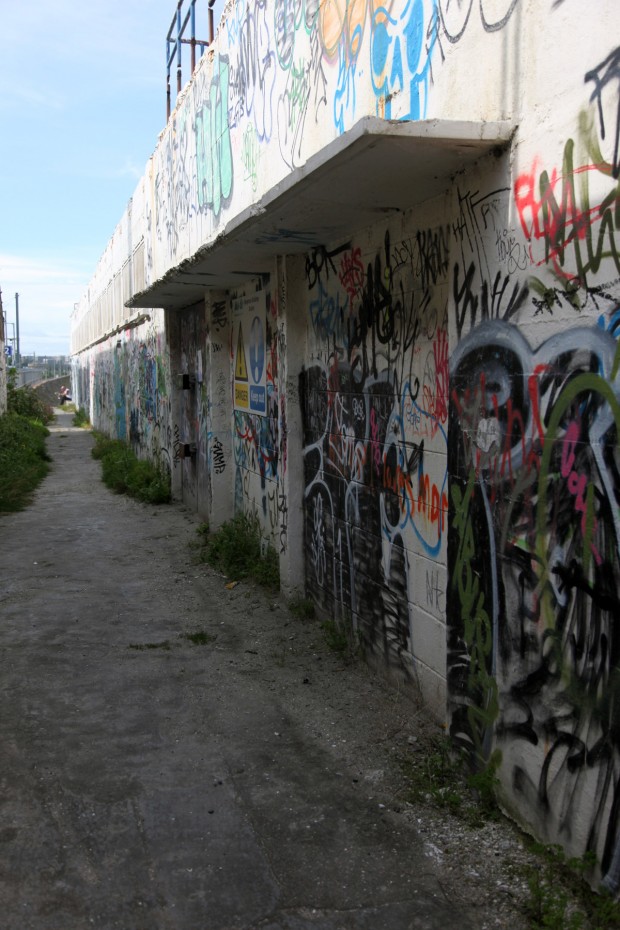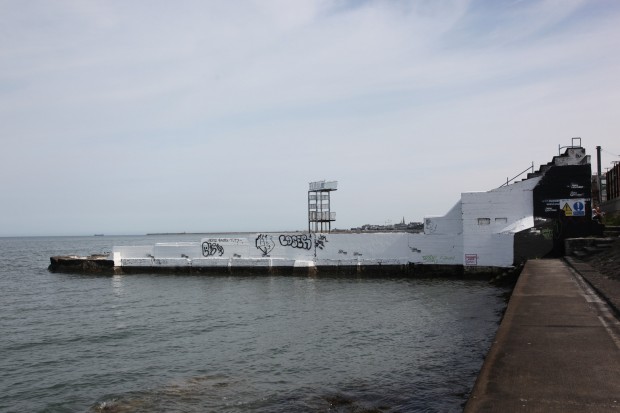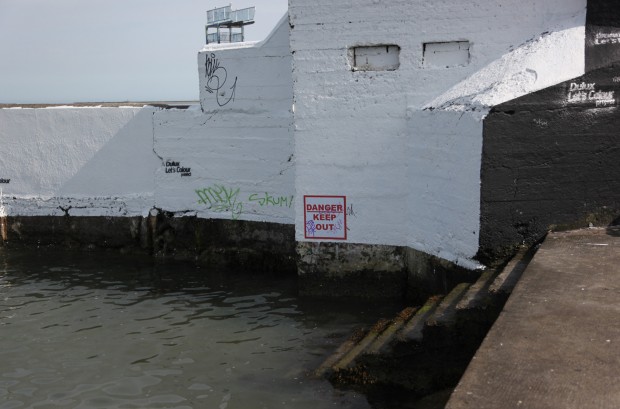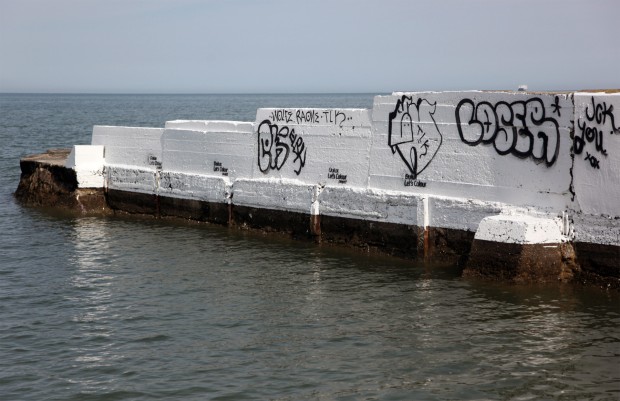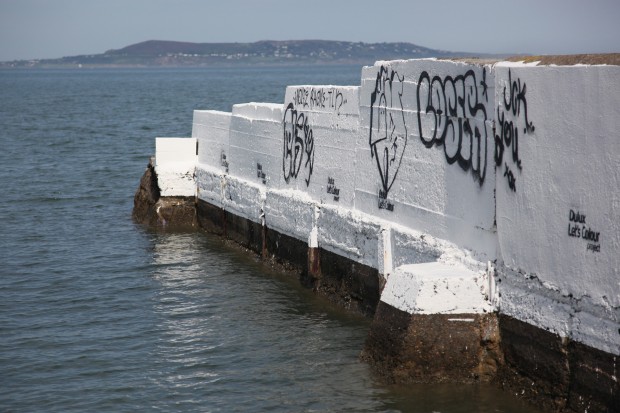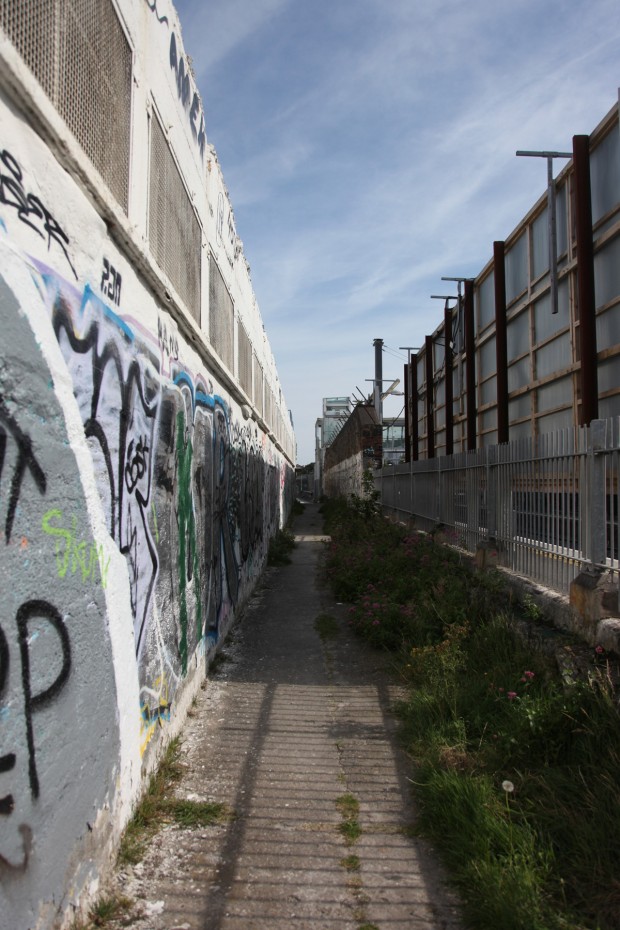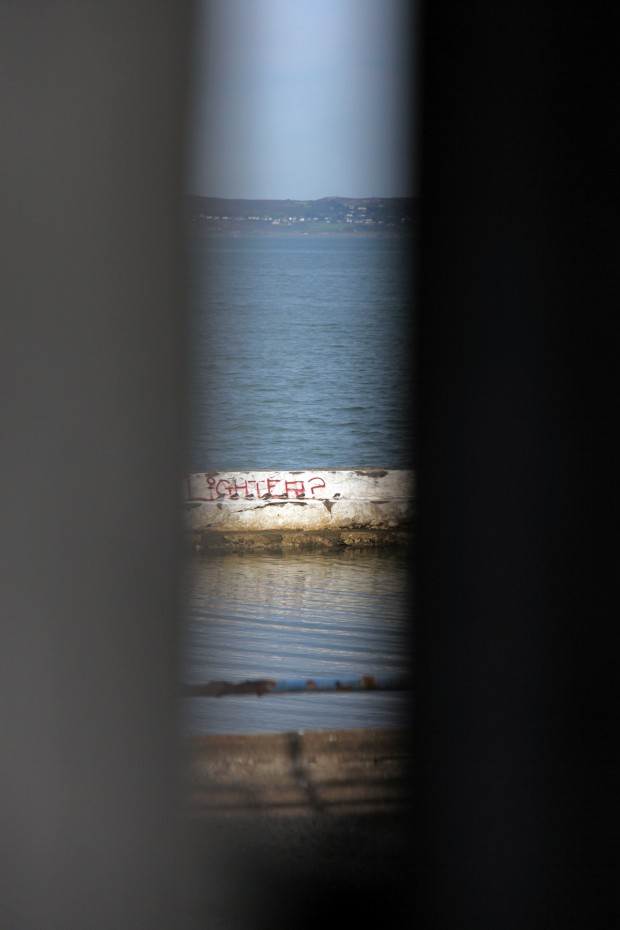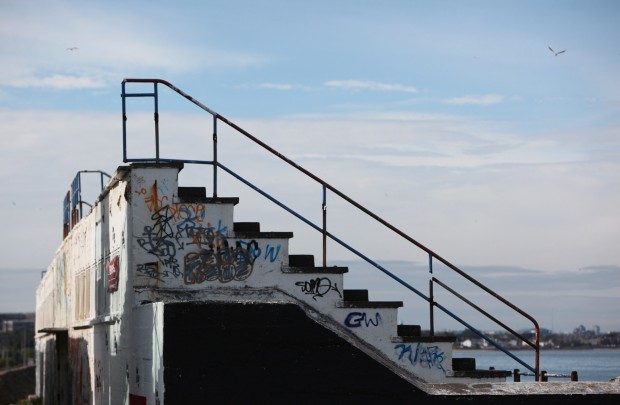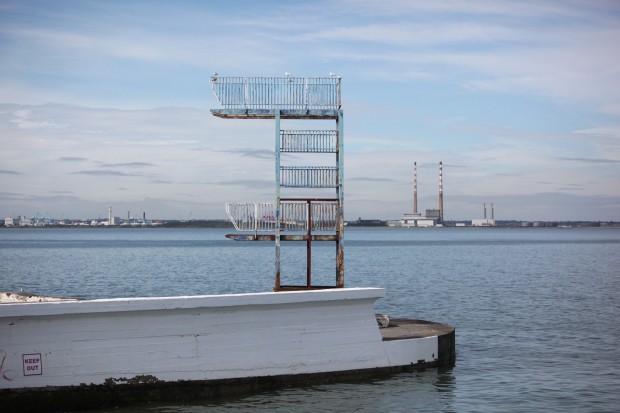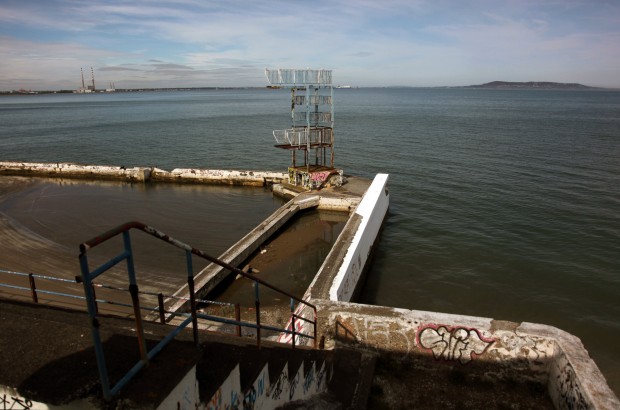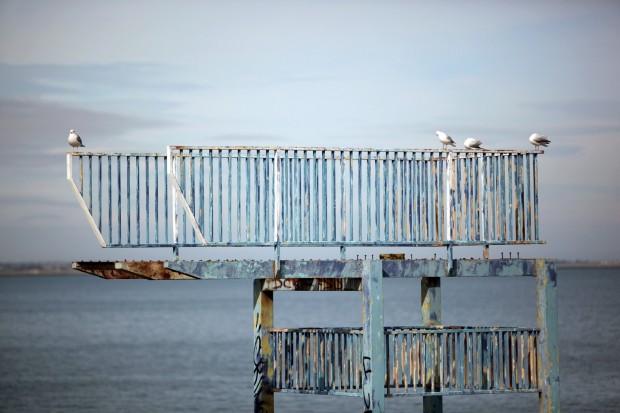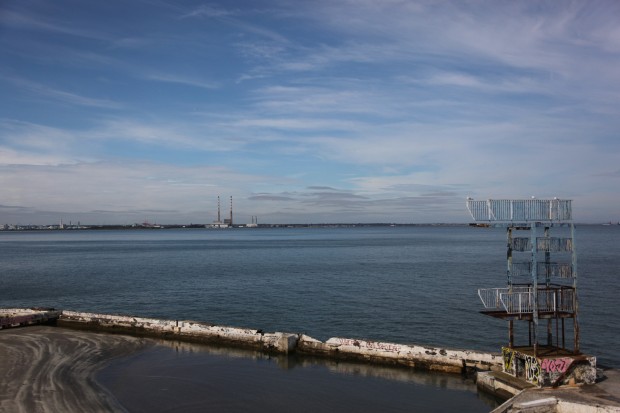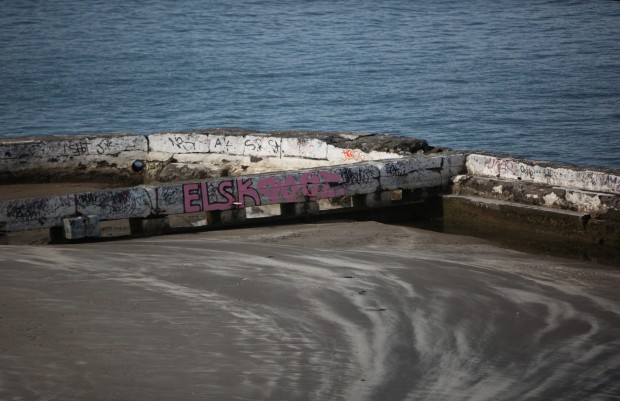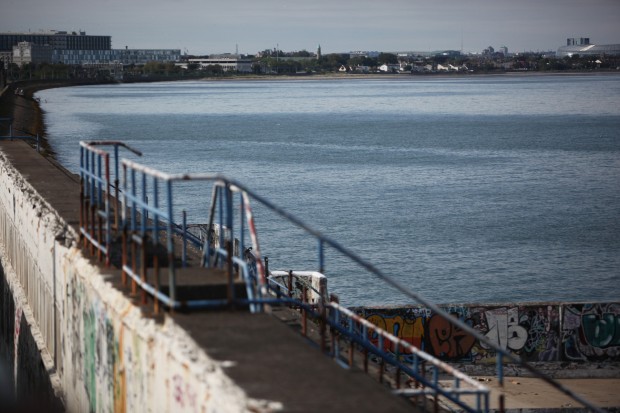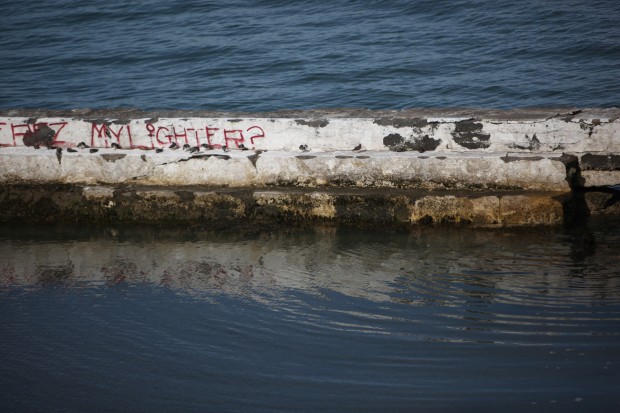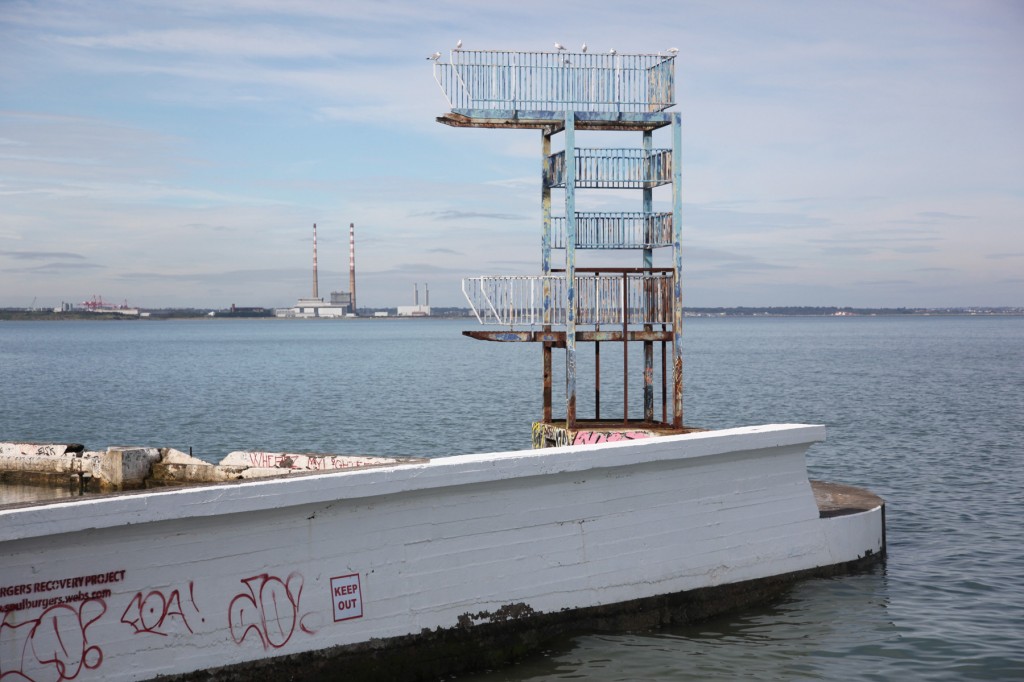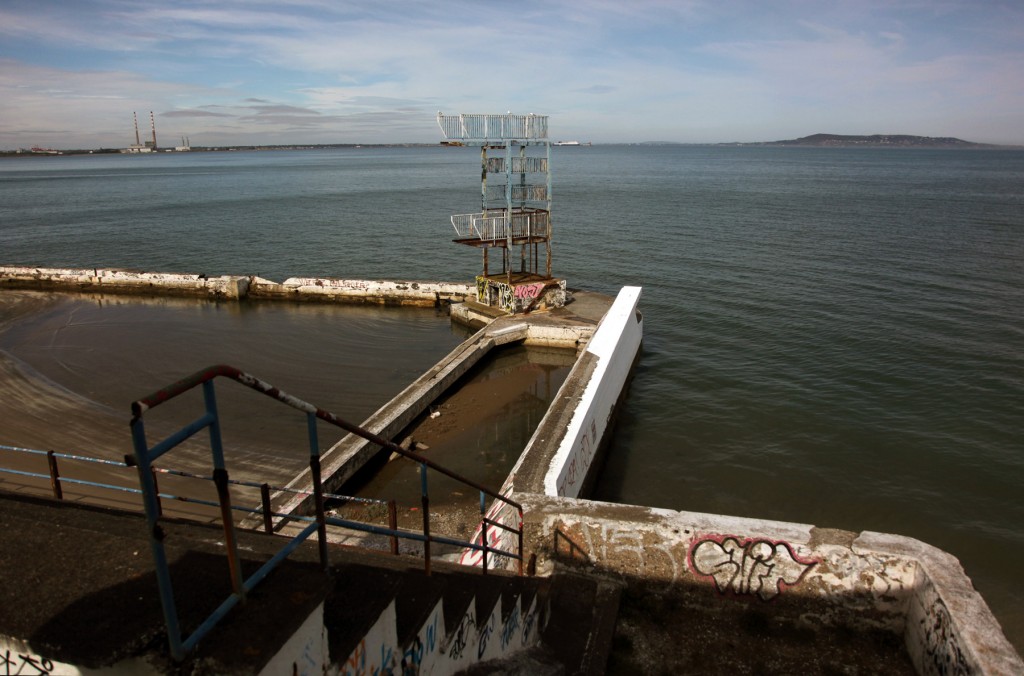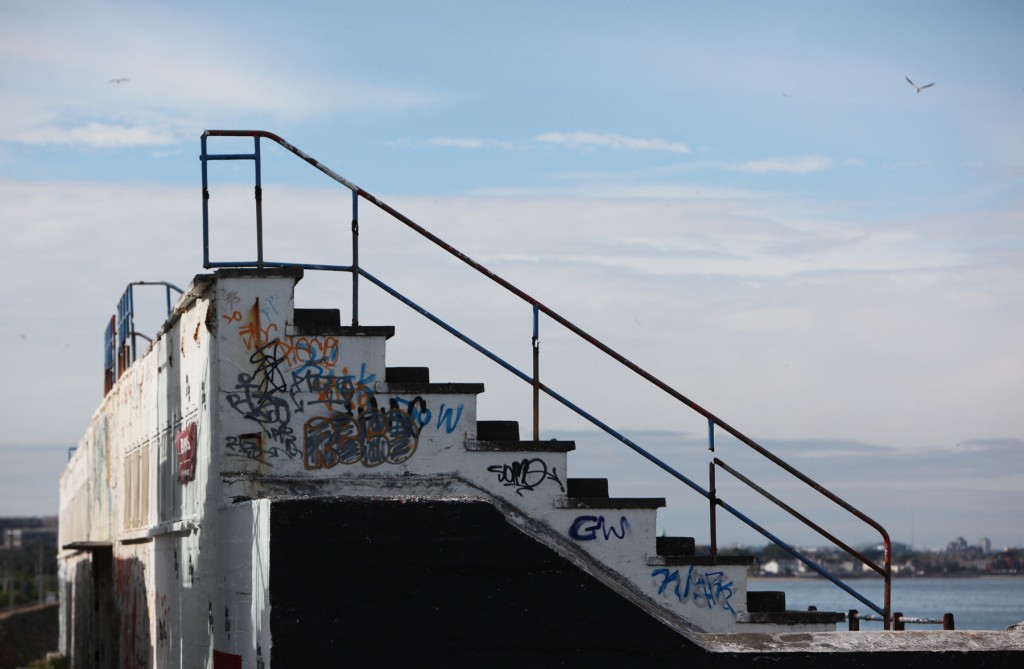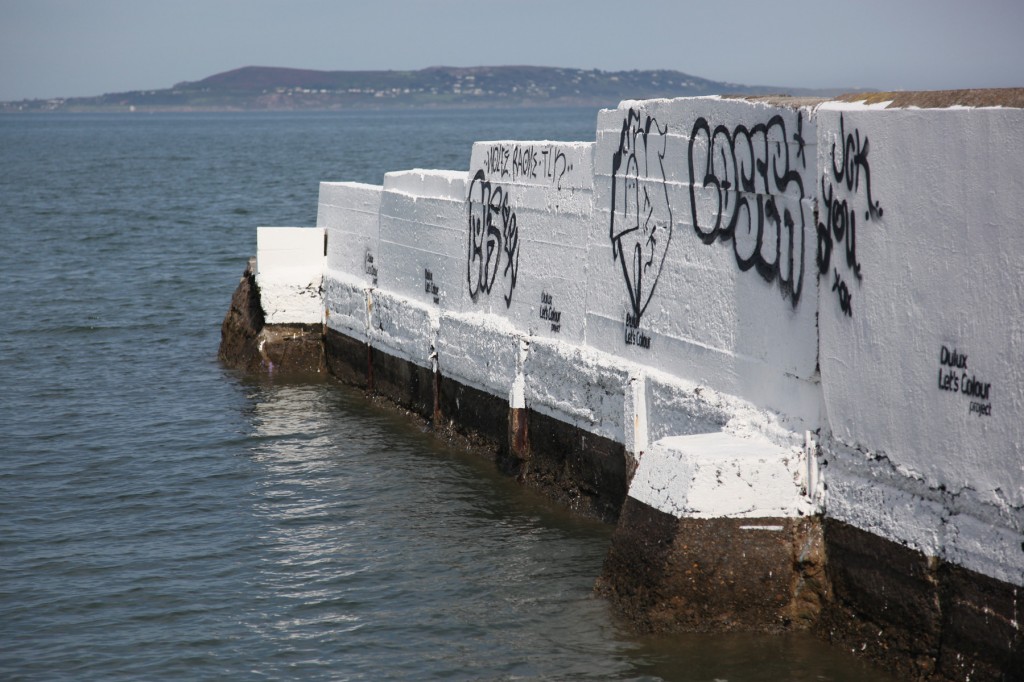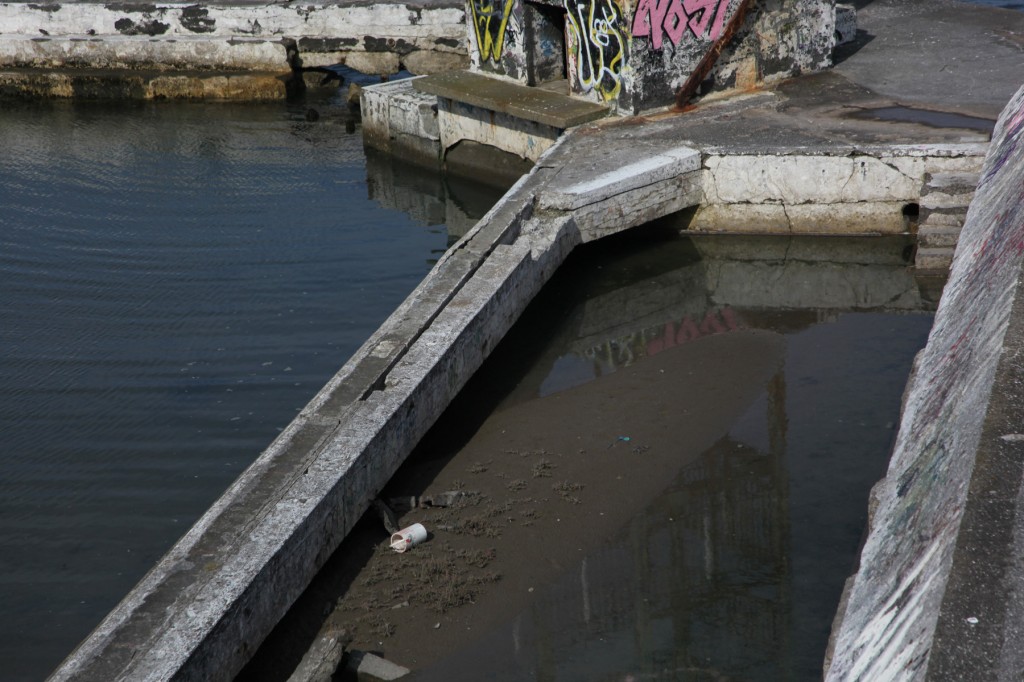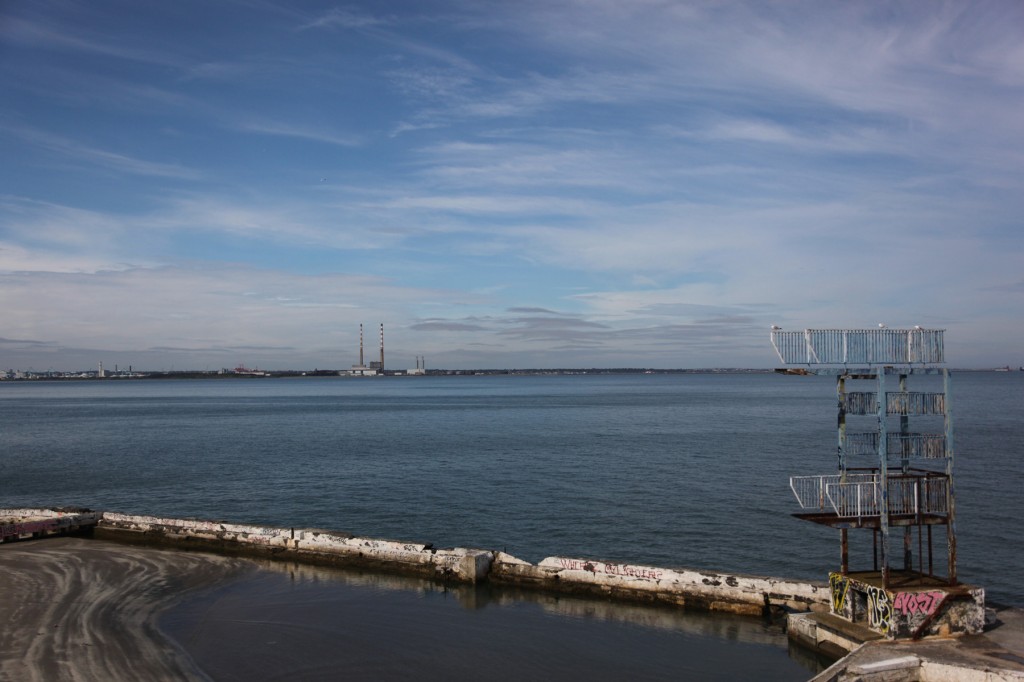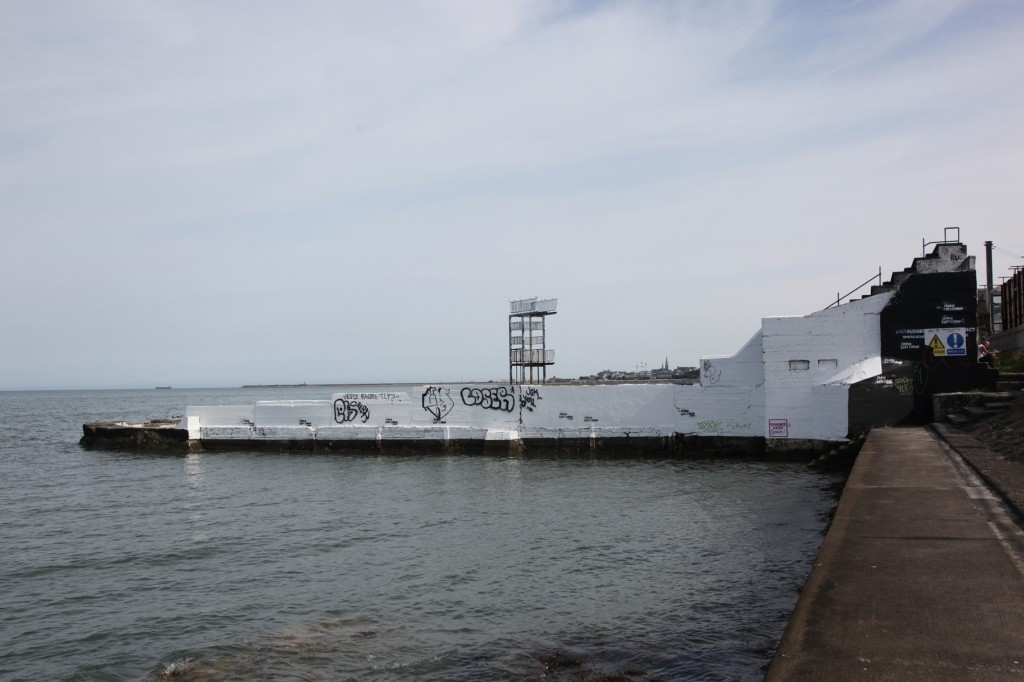Blackrock Baths have been out of use since the late 1980s. It appears that the 1986 summer season was their last as a public amenity, and in 1987, they remained closed due to cutbacks (The Irish Times, September 7 1987, p.11). The Leinster branch of the Irish Water Polo Association made private use of the pools in 1987, doing extensive cleaning and repair work to make the baths usable again after a year of exposure to the sea – at this point, the 10m diving platform was put out of use for safety reasons. At this point, the estimated running costs for a summer season were £10-30k, depending on admission fees.
This week, Dun Laoghaire-Rathdown County Council announced plans for demolition works at the baths, and though “the elements of the structures and Pool/sea wall that are not considered to be dangerous will be retained,” the gorgeous two-tier diving tower is one of the two-tier elements to be removed. The Council’s announcement outlines the issues with the current condition: the diving tower has come away from the pool, the reinforced concrete seating and changing block is in danger of collapse, the railings are rusted, and the concrete throughout has been damaged by wind and sea.
The first baths were constructed in the 1830s, replaced in 1887 by a concrete structure designed by architect and engineer William Kaye-Parry – a men’s pool and a ladies’ pool, surrounded by a promenade. In 1928, significant upgrades included the addition of steel grandstands with timber seating accommodating 1150, with steel-framed wire mesh glazing on the risers allowing light through the vertical surface of the steps. The steps were replaced since by reinforced concrete with the same gaps allowing lighting through.
The 1928 upgrades were completed in time to host the swimming and diving events of the Tailteann Games, and in this heyday of the baths, Blackrock offered the public access to a 50m 8-lane swimming pool with 10m and 3m springboards, as well as two smaller children’s pools.
The Baths have been a beautiful ruin and it’s strange to imagine them not being there, especially the diving tower popping up behind the DART station. The layout is simple – changing rooms located under the steps rising up on the land side, saltwater pools surrounded by the sea on the other side.
Visiting the site this week, the Council’s conclusion seems entirely fair. The rust, cracks and spalling on the structure are serious, the handrail is destroyed, and it’s clearly visited frequently. (Not by me, though, as I’m too clumsy to trespass over walls.) The pools are heavily silted. Every surface of the structure is covered in layers of tagging despite what appears to be a recent arranging-deckchairs-on-the-Titanic paint job. It’s worrying that it’s a privately-owned site* and a huge pity that the baths were never restored as a public amenity – it must have been a great place for a swim, with an amazing view from the water. Even from outside, Dublin’s skyline and port are framed at various points, the diving platforms and the walls bracketing a different part of the city depending on your angle.
My full set of Blackrock Baths photos is here on Flickr, if you’d like to see them at larger sizes.
* It’s leased to the Council but owned by a consortium including Treasury Holdings, Alanis Ltd (the McCormack family), developer Paddy Kelly, and the Ryan family.

